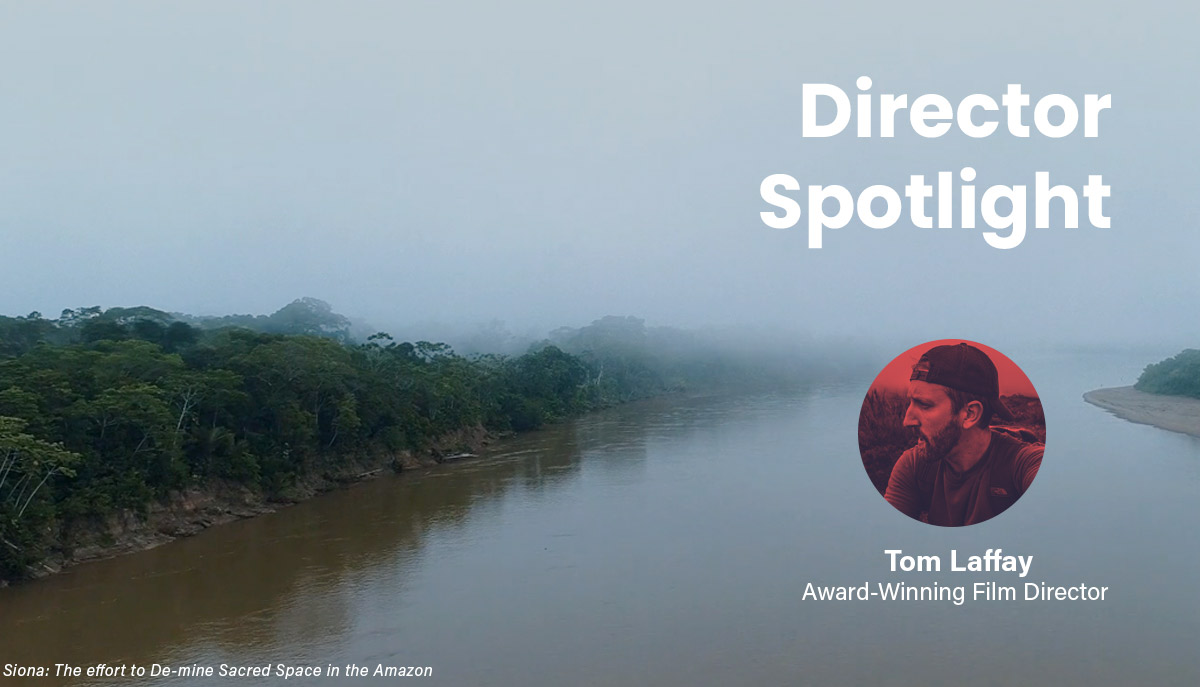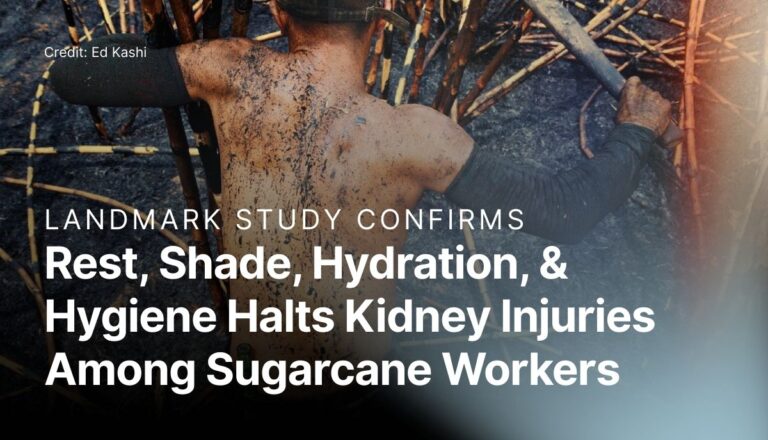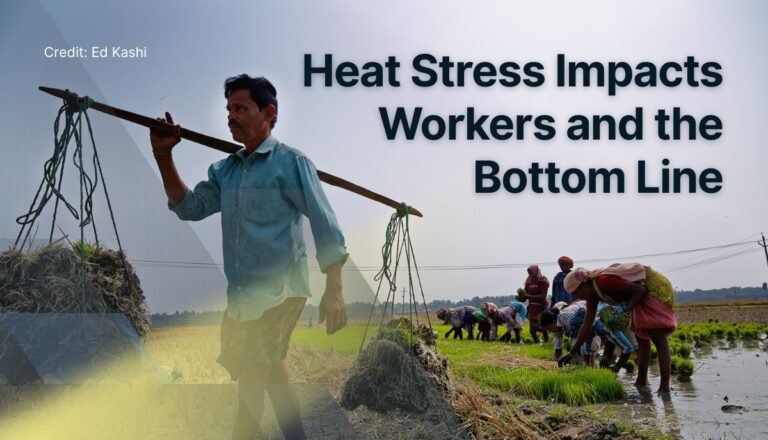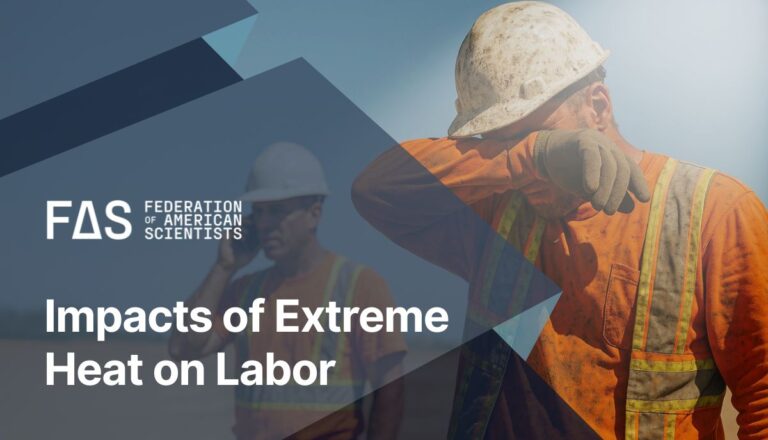We recently caught up with Tom Laffay, La Isla Network member and award-winning film director and visual journalist, for an interview about his latest short film “Siona: Amazon’s Defenders Under Threat.” The film follows the struggle of the Siona Indigenous nation to clear landmines from their ancestral territory in the Colombian Amazon, told through the story of Adiela Mera Paz, a Siona Indigenous leader. By clearing the landmines, Adiela is reclaiming the territory of her people, allowing those displaced by armed conflict to return while providing a hopeful and resurgent future for the next generation.
The film was recently awarded the 2021 Digital Video Storytelling (Medium Form) by the Online Journalism Awards (OJA), with judges calling it “[a] beautiful, cinematic experience showing the real-life consequences of a decades-long war and the native people still struggling to clear their ancestral homeland of deadly land mines.”
“Siona: Amazon’s Defenders Under Threat” was commissioned by the New Yorker and supported by the Pulitzer Center.
1) Your documentary follows the Indigenous (Zio’Bain) Siona nation and their struggle to clear land mines from their territory in Colombia’s Amazon. Can you give us some background on why landmines are located there?
Colombia endured over 50 years of armed conflict between the FARC guerrillas and the government, and while a peace deal was signed in 2017 between the two parties, armed conflict between dissident FARC and paramilitaries continues over narco trafficking in places like Putumayo which is ancestral Siona territory. Landmines are planted in places where armed forces might camp, like clearings on the side of a river, paths through the forest and in coca fields. Unfortunately in addition to killing and maiming soldiers, civilians and especially children are at great risk because they walk the same paths to go to school or to access their crops. Recently, a Siona grandmother was killed when she stepped on a landmine while she was going to fish.
2) How many Siona people are currently at risk from these landmines?
The Siona live in reservations essentially which are scattered along the Putumayo River and in other parts of the department as well as in Ecuador. There are at least three reservations where there are active landmines that pose a threat to communities, totaling roughly 1500 people I would estimate. The Siona are a small population who have been classified by the Colombian government as “at risk of physical and cultural extinction due to the armed conflict.“
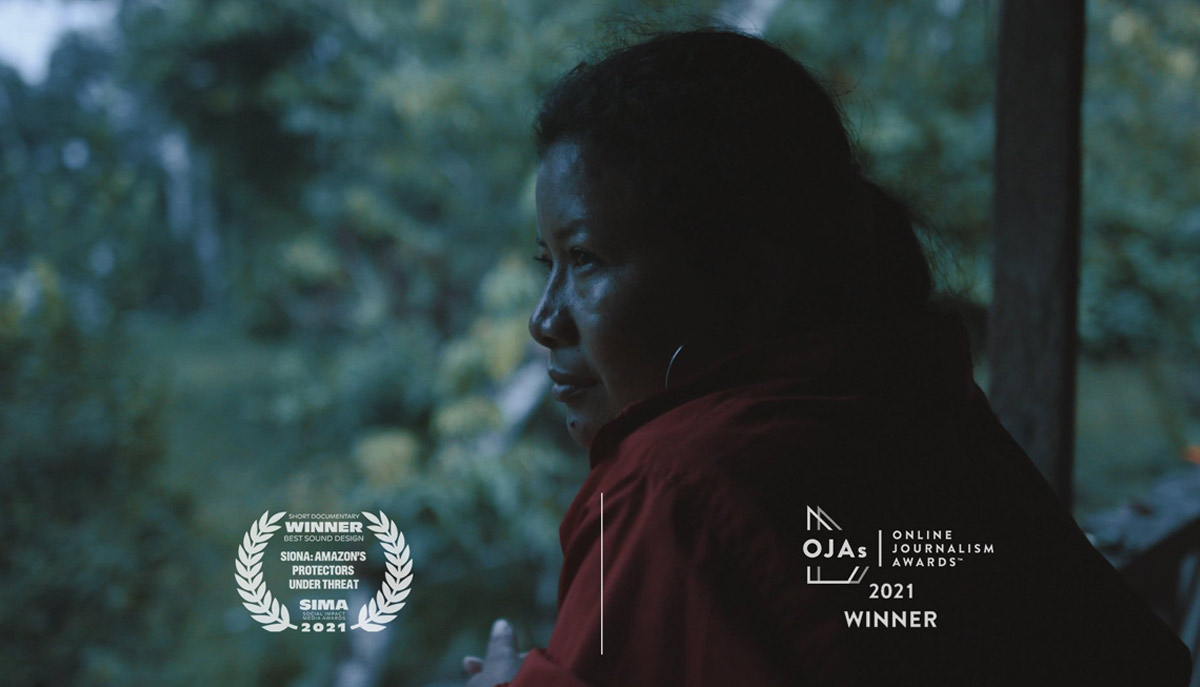
3) How did the idea for the documentary come about?
I am actually producing a collaborative feature length documentary with the Siona reservation of Buenavista since 2019, and while traveling with Siona leaders to New York City for the Climate March I was asked by The New Yorker to produce a short film which we developed together. I am still working on the feature and hope to premiere it in 2023.
4) A really powerful aspect of your film is the responsibility and care that Adiela Mera Paz, a leader from the older generation, feels for the younger people of Siona. What impact has the presence of these landmines had on the next generation?
The presence of landmines has displaced families from their territory to the nearby cities like Puerto Asis and Mocoa. It also prevents the youth from participating in cultural practices like hunting and fishing and generally walking the territory with their elders to learn about plant uses and medicines. It is a nearly invisible, yet devastating threat to the survival of their heritage and their ability to live in their territory.
5) What has been the Colombian government’s response?
The Colombian government plays both antagonist and ally in some senses. It provides some financial support for the Siona and is cooperating in the Siona’s fight to expand their reservations. However the Colombian army regularly sends units through Siona reservations for patrols and confronting FARC dissident groups, making the reservation a target for armed groups. The Siona have an active case with the InterAmerican Human Rights Commission (IAHRC) to denounce the presence of any armed actor in their territory as well as the intrusion of petroleum companies on their territory.
6) Why was it important for you to tell Siona’s story?
This specific project was important for me on a personal level to demonstrate my commitment to the collaboration I have with the Siona and that we can get their stories out. It’s also important on an international level to gain attention to their case and actually the head of the IAHRC tweeted about the film when it was published which perhaps had some positive effect on their case.
6) I think the most fascinating subtext of your film is the general uncertainty and fear of displacement, violence, and erasure from (and of) the land that Indigenous Siona people feel beyond just the presence of mines. Has clearing the mines allowed this community to reclaim their autonomy?
It’s definitely a process of reclaiming autonomy both physically and metaphorically I would say. This is also in the context of a number of active struggles, from legal cases against the Colombian state and petroleum companies, to the elders passing on traditional plant medicine practices like Yage (Ayahuasca) to their youth. All of these things are actually a holistic struggle for the Siona’s survival and their continued care for the part of the Amazon they call home.
7) Are there any stories or impressions you’d like to share that weren’t able to be included in the final cut?
There are so many, but you’ll have to wait for the feature to come out in 2023.
8) You’ve been a member of La Isla Network since 2011. What relationship does this film have to the work you do with LIN?
What first comes to mind is that the task I was given the opportunity to take on for LIN was to relate stories of a very marginalized and oppressed population; sugarcane workers in Nicaragua and El Salvador largely. The commitment we developed with worker populations to tell their stories and get those stories out in places of power made a great impact on me and I try to have impact with the work I take on, whatever the subject is.
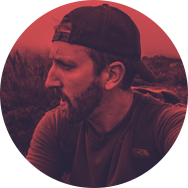
Tom Laffay is a self shooting film director and visual journalist specializing in working on long term documentary investigations in Latin America. Since 2011, he has been a member of La Isla Network working to advance improvements in the agricultural labor sector in Central America. Tom has covered the CKDnt epidemic in Nicaragua, El Salvador, Peru, and South India.
Learn more about Tom’s work at tomlaffay.com

